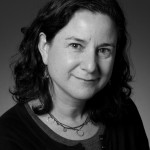This is the first installment of a new feature at Moyers & Company, as producer Gail Ablow shares her must-read money and politics stories every week.
Koch-Backed Political Coalition, Designed to Shield Donors, Raised $400 Million in 2012: Mattea Gold of The Washington Post dives deep into the political money maze constructed by conservative billionaires Charles and David Koch. Gold uses a collaborative analysis of tax returns by WaPo and the nonpartisan Center for Responsive Politics to investigate the 17 interconnected groups backed by the Kochs and other conservative donors – an alliance that raised $407 million to influence the 2012 campaign. “Its funders remain largely unknown,” writes Gold. “The coalition was carefully constructed with extensive legal barriers to shield its donors.” This opaque network is in gear again to attack the new health care law, kill environmental regulations, and impact the 2014 midterm elections.
Political Donors Chase Funding Alternative: Thomas Catan at The Wall Street Journal reports that the possibility of new IRS rules to limit the campaign activity of nonprofit social-welfare groups, known as 501(c)(4)s, is sending lawyers scurrying. Catan writes: “Lawyers are scouring the tax code for other financial vehicles that would allow political donors to continue to spend money on elections while remaining anonymous.” Several new strategies are emerging; one is to create taxable, for-profit businesses that will keep donors hidden. Catan quotes Robert Kellner at Covington & Burling, LLP: “It’s a trend that is accelerating, and the new proposals are going to put more steam behind the train.” Another strategy is to create trade associations, known as 501(c)(6) groups. The Koch brothers already have a trade association in place that they call Freedom Partners Chamber of Commerce. During the 2012 election it poured more than $235 million into conservative causes. Andy Kroll at Mother Jones tweets: “IMPORTANT: Political operatives could use Chamber-style trade associations or for-profit LLCs to keep donors hidden.”
Dark Money Groups Have Already Spent Way More Than You Think: The Huffington Post’s Paul Blumenthal worked with the Sunlight Foundation to analyze press releases, news reports and FCC data to determine the spending of dark money groups since January 2013. They found that during that time, trade groups and social welfare organizations — 501 (c) (6)s and 501 (c) (4)s – spent at least $24.6 million on issue ads naming specific candidates. That was seven times the amount these groups reported they had spent on campaign activities during the same period. The Koch Brother’s Americans for Prosperity led the pack with at least $12.4 million spent on anti- Obamacare ads. While liberal dark money groups spent some $3.3 million on issue ads, with much of the money coming from the League of Conservation Voters.
Hillary Clinton’s Shadow Campaign: Hillary Clinton’s Shadow Campaign: Maggie Haberman reports for reports for Politico that despite Hillary Clinton’s insistence that she is nowhere near a decision to make a bid for the White House, a “shadow campaign on her behalf has nevertheless been steadily building for the better part of a year.” And in these shadows, super PACs are jockeying for position and influence. In at least one instance, reports Haberman, Ready for Hillary, a super PAC billed as a grass-roots effort to organize support for the potential candidate is clashing with Priorities USA, the super PAC behind President Obama in 2012 that is now deciding whether to reinvent itself as a pro-Hillary Clinton organization. The two organizations have conflicting strategies even as they vie for the same supporters. Independent political groups, as Haberman describes, can become a headache for candidates (and in Clinton’s case not-yet-candidates) who are not allowed to coordinate with them.


